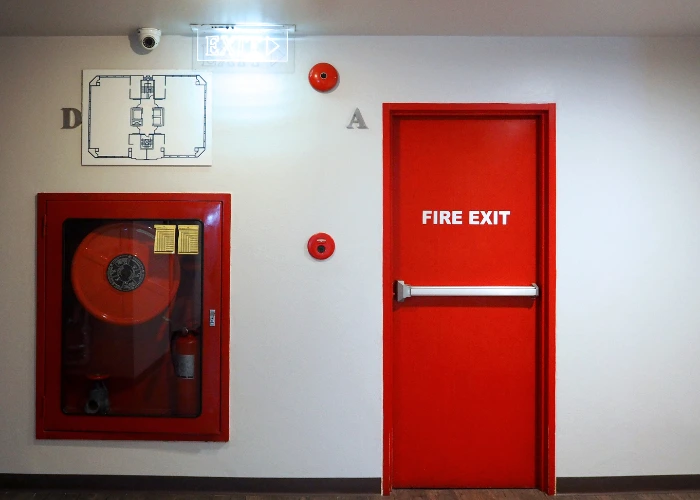
Fires are a real danger. While the requirements for commercial fire door inspections may not be completely clear, facility managers should not wait to address them.
It is vital that you familiarize yourself with the basics and benefits of adequately inspecting fire doors. Keep reading below.
A fire door is specifically designed to resist and contain fires. They are not only doors, but rather, doors that have been explicitly designed for fire safety purposes.
Fire doors usually offer a fire-resistant construction, a self-closing feature, and other means of preventing a fire from spreading and harming people. They also can possess an automatic fire-protection system that can work with other fire protection systems.
Fire doors have a few basic features that you must be familiar with:
There is a vital fire protection requirement for every building owner in the United States. Moreover, you can acquire many benefits from the inspection, including:
Now that you know the essential elements and requirements of a fire door inspection, you can produce an effective and efficient fire door inspection. For instance, the following are fundamental best practices in fire door inspection:
The fire code is a crucial part of the fire safety inspection. It is the basic principle behind fire safety and fire safety inspections. As you conduct inspections, you should familiarize yourself with the fire code to better understand your jurisdiction’s requirements. Make sure to read it carefully to determine if there are some special provisions for your jurisdiction.
To conduct a thorough fire door inspection, you should follow the standard four-part approach. The four-part approach is a general fire safety inspection method applicable to almost any building. Here are the four parts: its location, the kind of door it is, if it has a fire-resistant construction, and how it operates.
In addition to performing a fire safety inspection, you should also perform a fire door inspection. The reason is simple: a fire door inspection is a critical part of fire safety.
You should produce a clear set of objectives and a checklist that you can use to perform a thorough fire door inspection. This would include a time limit and a clear set of instructions to follow.
Your findings from a fire door inspection are important information that can help you improve a facility’s fire safety. To produce an effective report, you must list the following:
Fire doors are a critical part of fire safety. Inspecting them often is crucial to ensure that your facility has a safe and efficient fire protection system. Make sure that you check fire doors frequently by following best practices.
Do you need fire door inspection tools? Turn to All Things Inspector. We have a wide range of tools for fire inspection, ADA knee clearance, and many more. Check out our products now!



Navigating building code compliance means balancing three distinct frameworks: the Americans with Disabilities Act (ADA), the International Building Code (IBC), and the National Fire Protection

Vague ADA deficiency reports cost thousands in rework and project delays. Contractors need specific measurements, clear photographs, exact code references, and actionable remediation steps to